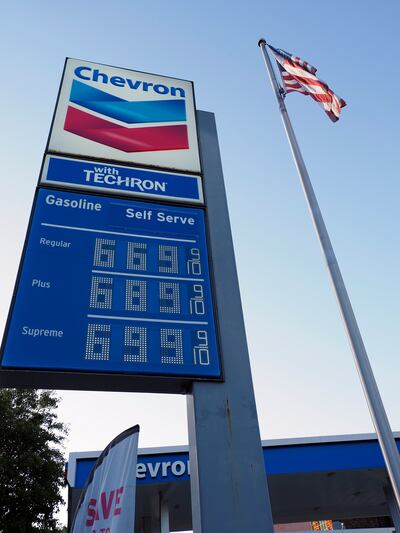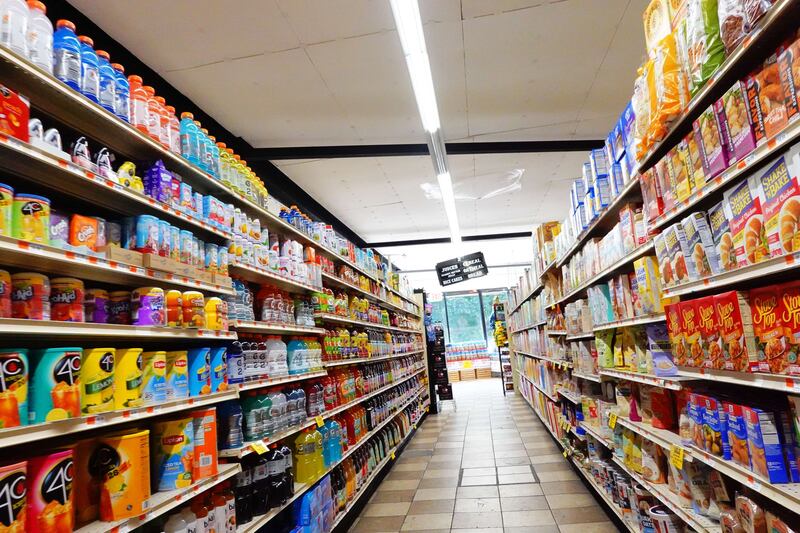Anyone hoping that the recent slump in oil prices will bring a quick fix for rampant global inflation needs to think again.
While Brent, the benchmark under which two thirds of world's oil is traded, has shed 10 per cent in the past few weeks, retail prices all over the world for products such as petrol and diesel have not fallen anywhere near as fast — and are often still rising.
In the US, prices at the pump are only a few cents below a record of more than $5 a gallon set earlier this month. The UK continues to set daily retail fuel price records, while in Singapore, prices are hovering close to the highest ever.
These are all signs that the oil industry’s main supply problem — principally a shortage of capacity to make refined fuels — has no easy fix except demand destruction. But for now, with many governments buoying consumption through subsidies or tax cuts, refineries are struggling to make as much petrol and diesel as the world wants.
“The restraint is on refining capacity,” said Amrita Sen, co-founder and director of research at London consultancy Energy Aspects. “We’ve seen crude prices come down but products really haven’t.”
If that is bad news for central bankers and consumers alike as they contend with the inflationary impact of those increases, then it has also been a boon for oil refineries.
In north-western Europe, margins from making fuel hit their highest since at least the spring of 2018 this week.
They are high in part because governments around the world have been grasping for ways to alleviate the burden of record prices on consumers.
US President Joe Biden this week called for a pause in petrol tax collections, while Japan also announced a subsidy this week. Emerging economies including India, Mexico and South Africa have either reduced taxes or increased subsidies.

“There are minimal major signs of material demand destruction,” RBC Capital Markets analysts including Michael Tran wrote in a note to clients.
“The potential for President Biden’s gasoline tax holiday effectively leads to demand preservation, which comes with the unintended consequence of further drawing down product stockpiles and keeping prices elevated for longer.”
And therein lies an oil market conundrum: while crude futures prices have slumped on the expectation of a large hit to consumption, government policies are still keeping it aloft.
Wholesale diesel is trading upwards of $170 a barrel, depending on where in the world you are, while petrol is at about $160 a barrel. At the pump, it can be significantly higher because different countries have wildly different taxation policies.
Even though the global refining system is expected to process more crude oil this year and next — helped by new facilities coming online in the Middle East, China and Africa — it will not be enough to balance the markets of jet and diesel-type fuels, the International Energy Agency said.
Some refineries in Europe and the US shuttered when Covid-19 struck, but they’re not coming back now that demand is rebounding from the pandemic. At the same time, China is keeping huge amounts of capacity offline to combat pollution while the virus hits demand there, taking away one potential source of diesel.
Part of diesel’s issue is Russia-related, too. It is Europe’s single largest external supplier even after its invasion of Ukraine.
Prices are surging to sky-high levels as traders fret over whether the region has enough supply for winter when an imports ban starts, Vitol Group said this week.
On the US East Coast, the pricing points for petrol and diesel futures, refineries are running at the highest percentage of capacity for the time of year in at least three decades. In the refining hub on the Gulf Coast, processing is near seasonal highs over the same period.
But more than one million barrels a day of US refining capacity has been shut since 2019 and those that remain are going flat out.
The cut backs mean that stockpiles of refined products are low. As long as they stay that way, there’s unlikely to be much respite at the pump unless there are signs of major demand destruction.
So far, that has not happened, although the world appears to be headed for a recession, with Federal Reserve Chairman Jerome Powell saying that achieving a soft landing for the economy looked “very challenging”.
For the time being, crude oil futures are being sold by traders who view it as a bet on macroeconomic conditions. But premiums for fuels, known in industry jargon as cracks, are holding up because of the refining bottleneck.
That combination means traders are paying soaring premiums to get physical cargoes of crude to quickly process into fuels.






